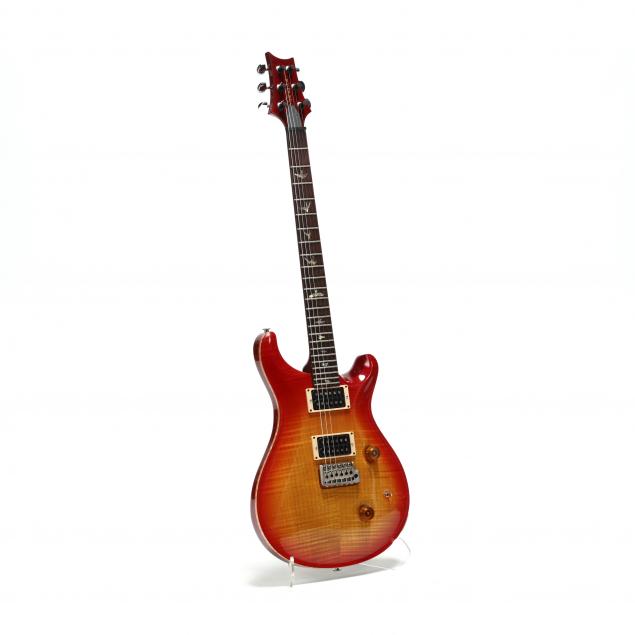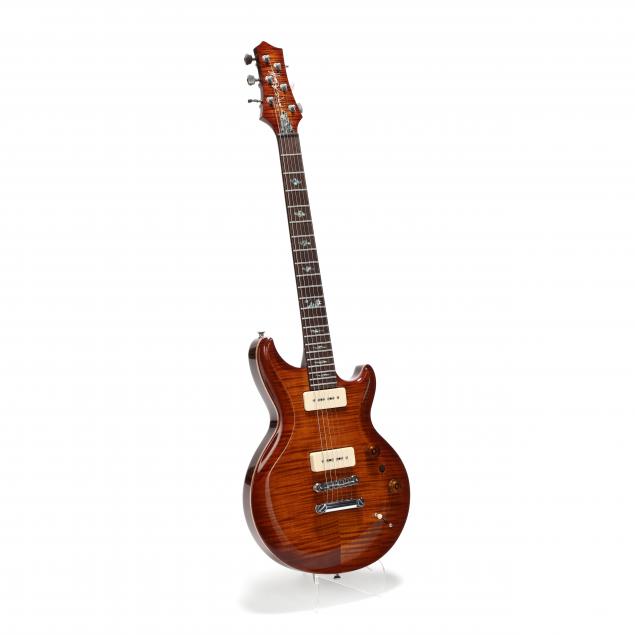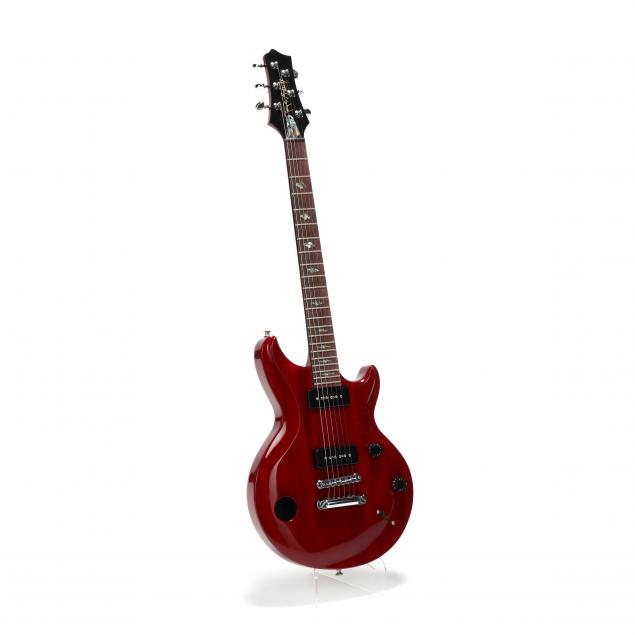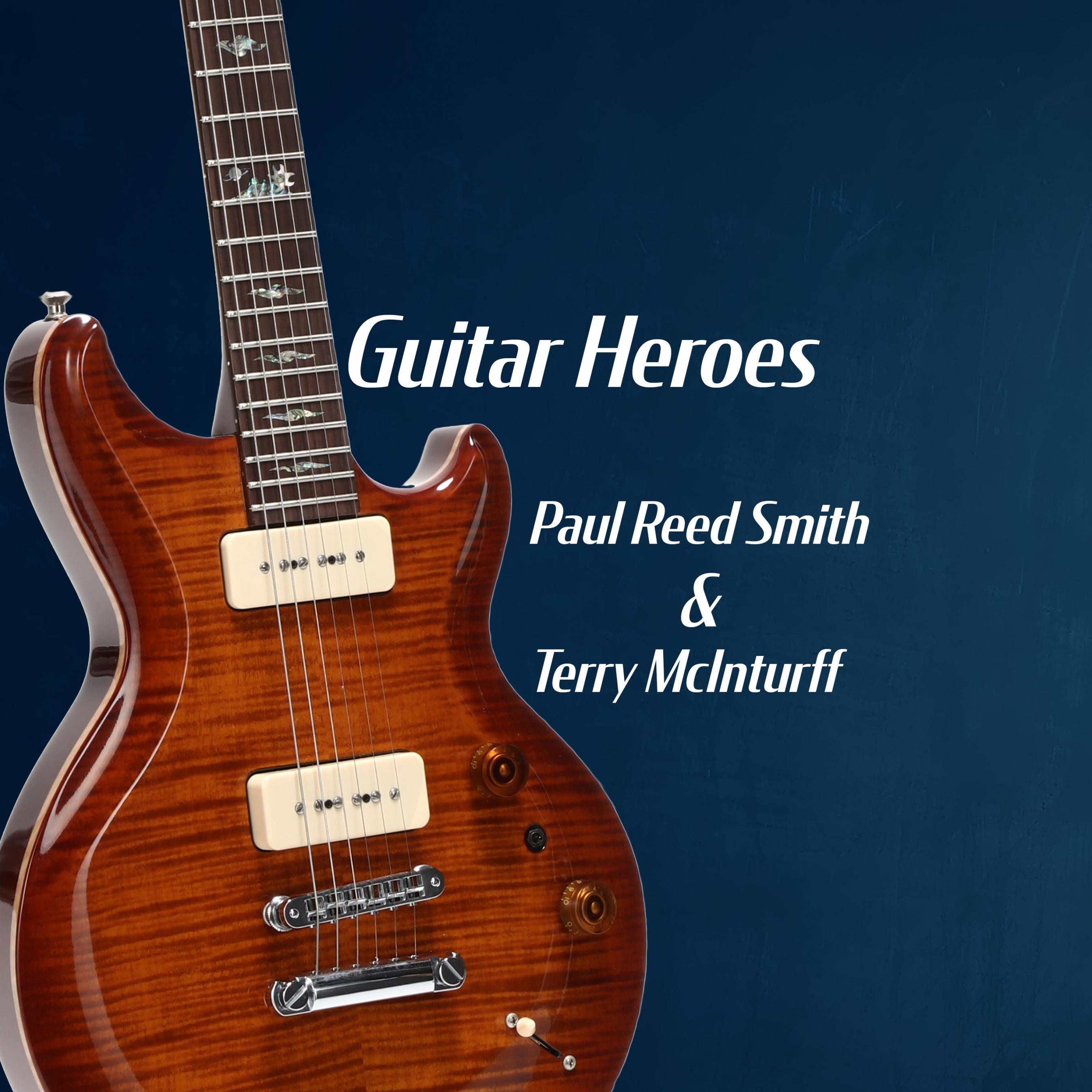
We love the musicians and their music; the musicians love the instruments and their makers. In our 21st Annual Memorial Day Auction, we are featuring guitars made by two luthiers whose instruments have gained the devotion of the famous musicians who play them. Paul Reed Smith and Terry McInturff may not be household names for your average Spotify listener, but to the musicians whose names populate your playlists, they're legends.
Both Smith and McInturff stand out in the guitar-making world as consummate solo craftsmen who managed to create a brand that could compete with the historical heavyweights like Gibson and Fender. Below, we get to know the two luthiers and their individual journeys to guitar-making success.
Both Smith and McInturff stand out in the guitar-making world as consummate solo craftsmen who managed to create a brand that could compete with the historical heavyweights like Gibson and Fender. Below, we get to know the two luthiers and their individual journeys to guitar-making success.
Paul Reed Smith
Paul Reed Smith was introduced to guitar-making through an off-hand challenge from a college music professor in the 1970s. If you can turn this bag of wood into a guitar, the professor told him, I'll grade it for extra credit. Smith, who had loved woodworking enough to take multiple shop classes at a time through high school, could and did. The professor gave Smith an "A" and he never looked back.
After that fateful assignment, Smith dropped out of college and paid the bills repairing and restoring guitars while painstakingly honing his guitar-making skills. He would make one guitar a month, play it onstage, and then take it back to his shop to refine it. One at a time, he drove his guitars around to the concerts of musicians he admired. He'd get there early to make friends with the roadies, and talk his way backstage to get his guitar into the hands of the musician. In this way, Smith slowly gained a few influential supporters like Ted Nugent and Howard Leese.
Paul Reed Smith was introduced to guitar-making through an off-hand challenge from a college music professor in the 1970s. If you can turn this bag of wood into a guitar, the professor told him, I'll grade it for extra credit. Smith, who had loved woodworking enough to take multiple shop classes at a time through high school, could and did. The professor gave Smith an "A" and he never looked back.
After that fateful assignment, Smith dropped out of college and paid the bills repairing and restoring guitars while painstakingly honing his guitar-making skills. He would make one guitar a month, play it onstage, and then take it back to his shop to refine it. One at a time, he drove his guitars around to the concerts of musicians he admired. He'd get there early to make friends with the roadies, and talk his way backstage to get his guitar into the hands of the musician. In this way, Smith slowly gained a few influential supporters like Ted Nugent and Howard Leese.
Carlos Santana proved a harder sell. When Smith worked his way backstage at a Santana show sometime around 1980, Santana had mostly been playing Gibsons. But after noodling with Smith's guitar backstage that night, he ordered one on the spot. Ah, but not so fast....an hour or so later, after playing a few notes on the guitar onstage, Santana withdrew his order. By Smith's account, he sweet-talked his way into sending Santana another version of the guitar, and it took Santana four guitars to be convinced that Smith was more than a one-hit wonder. Since then, however, Santana has played almost exclusively PRS guitars, and in 1995 Smith introduced a signature "Santana" line of instruments.
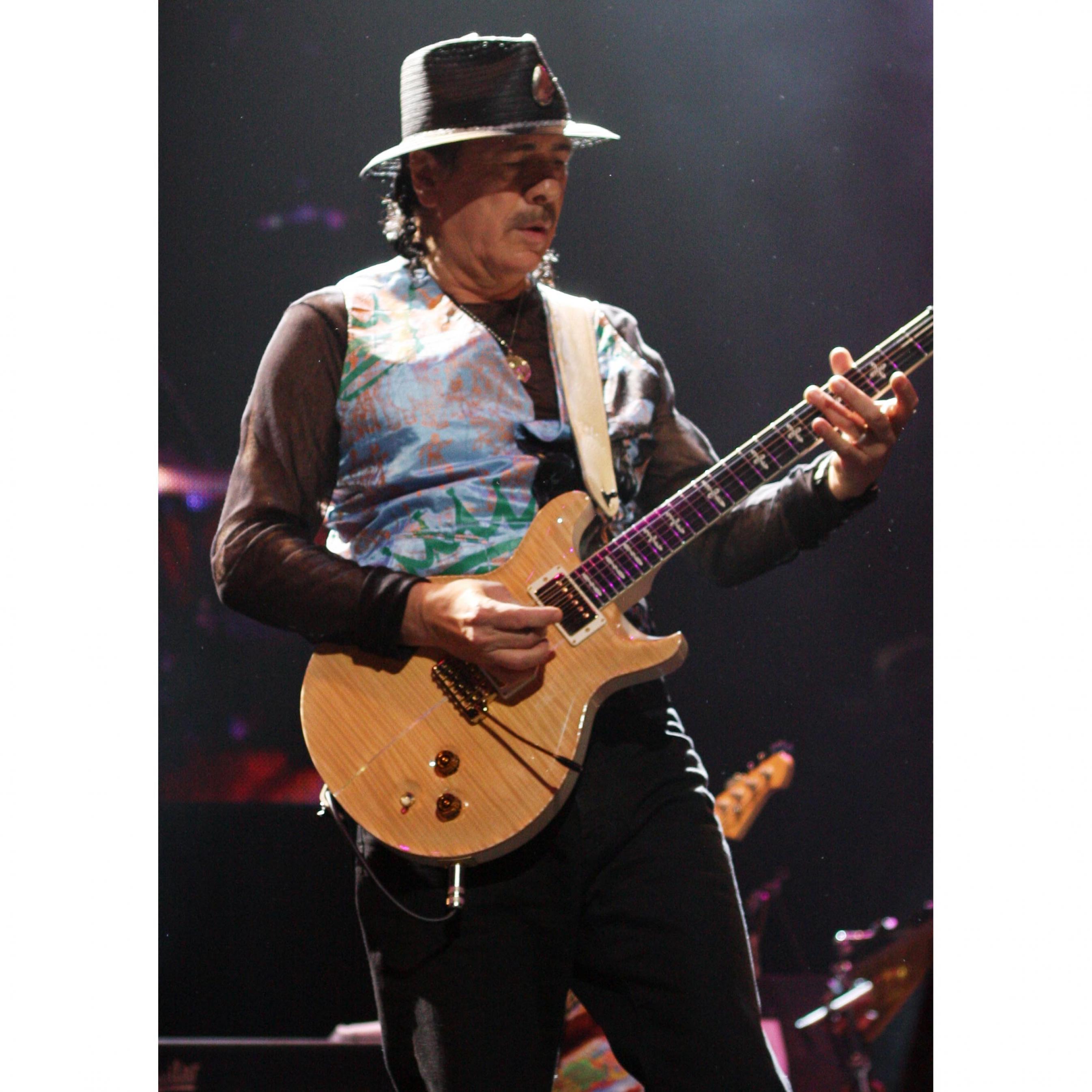
Carlos Santana playing a Paul Reed Smith guitar
Contemporary musicians continue to be enamored with PRS guitars - Blake Shelton, Brian Kelley of Florida Georgia Line, and John Mayer (who abandoned a partnership with Fender to switch to PRS) are all enthusiasts. Fun fact: Smith has not only grown his guitar-making business in recent years, he's also made inroads into the medical and intelligence industries. In 2015, Smith started a company called Digital Harmonic. 20 years earlier, Smith and his father, an applied mathematician, were tinkering with a new synthesizer idea and discovered that they could isolate and amplify digital information that was otherwise undetectable. Digital Harmonic is now applying the technology to diagnostic imaging and intelligence-gathering operations, which makes Paul Reed Smith a cult hero for music, science, and spy fanatics alike.
Terry McInturff
Where Paul Reed Smith has grown his business into a global enterprise, Terry McInturff made the conscious decision to keep his guitar-making operation small. Born and raised in Chicago, McInturff discovered the electric guitar by listening to AM radio as a kid. He moved to North Carolina during high school, but when he heard that guitar-making was something people did for a living, he enrolled in the Roberto-Venn School Of Luthiery in Phoenix, Arizona in 1977. In 1978 he went to work repairing guitars and has been working with the instruments ever since.
Like Smith, McInturff first mostly earned a living repairing and restoring guitars. But after playing his guitars in a number of North Carolina bands and then working for several other guitar-makers in Chicago, he moved back to North Carolina in 1996 and opened his own studio in Siler City. He's been attracting the business of world-class musicians like Eric Clapton and Jimmy Page to the small-town South ever since.
McInturff wanted to bring something original to his craft, and he sees his contribution to the world of guitar-making to be the particularly resilient necks of his guitars. In order for standard guitars to withstand the stress of the strings without bowing overtime, they have to be reinforced, which McInturff deemed compromising to the sound. And so early in his career he devised a method to build guitar necks that both preserved sound and held up to years of use. McInturff also considers it important that electric guitars be built to produce superior sound before they're ever amplified. He understands that if the sound isn't there to begin with, making it louder won't change that.
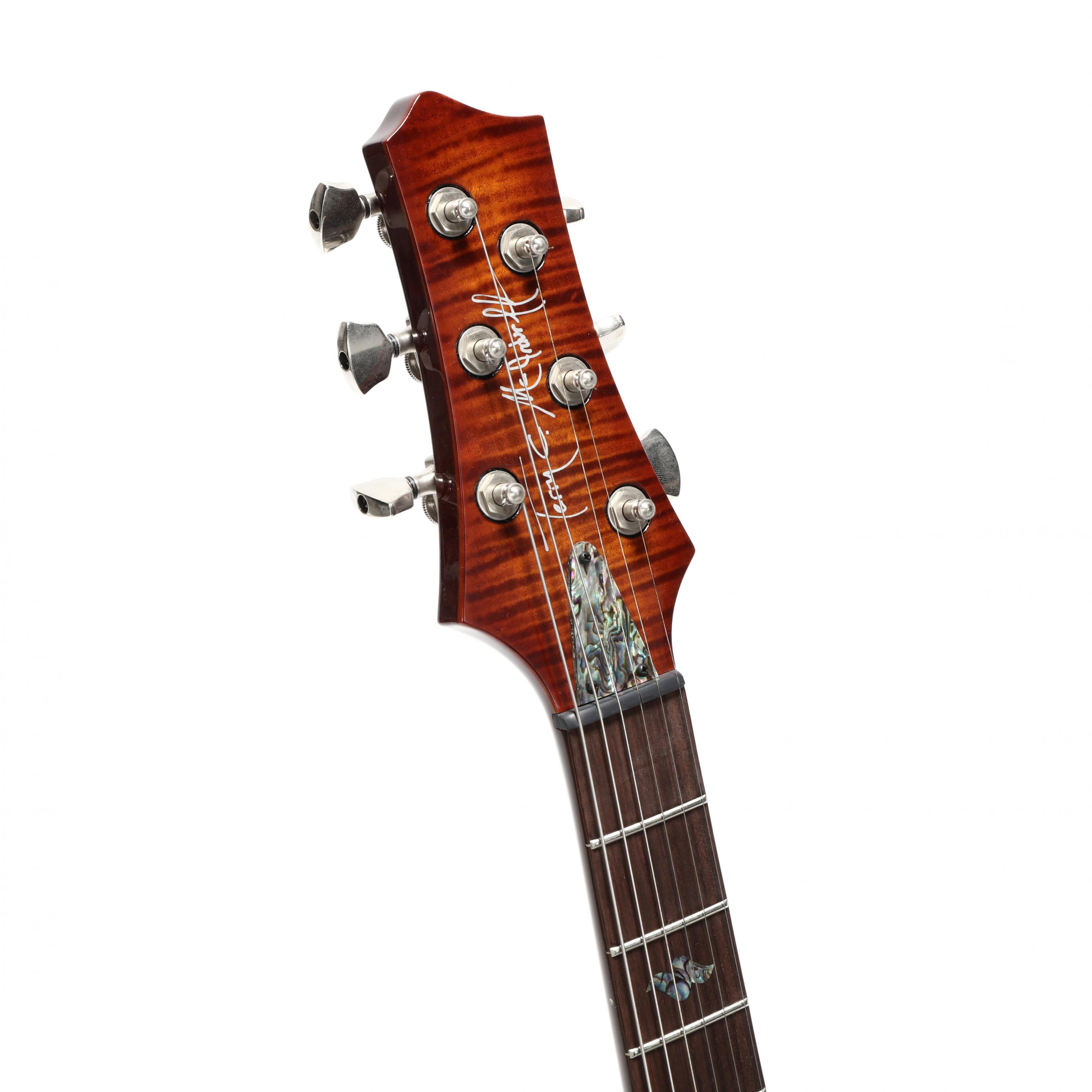
Where McInturff and Smith diverge is in their business model. McInturff did at one point begin to expand his operation to produce more guitars, but found that he didn't enjoy the process of running a larger business. He wanted to stay close to his customers and to his craft. And so while he maintains a small staff, McInturff remains deeply involved in every aspect of making his guitars, from working on custom orders with his clients to selecting wood. Every one of his guitars is truly a McInturff original, bearing the care and precision of the maker's own hand.
See the full selection of instruments in the Memorial Day Auction here.
The 21st Annual Memorial Day Auction
Monday, May 25th
9:00am (EDT)
See the full selection of instruments in the Memorial Day Auction here.
The 21st Annual Memorial Day Auction
Monday, May 25th
9:00am (EDT)


